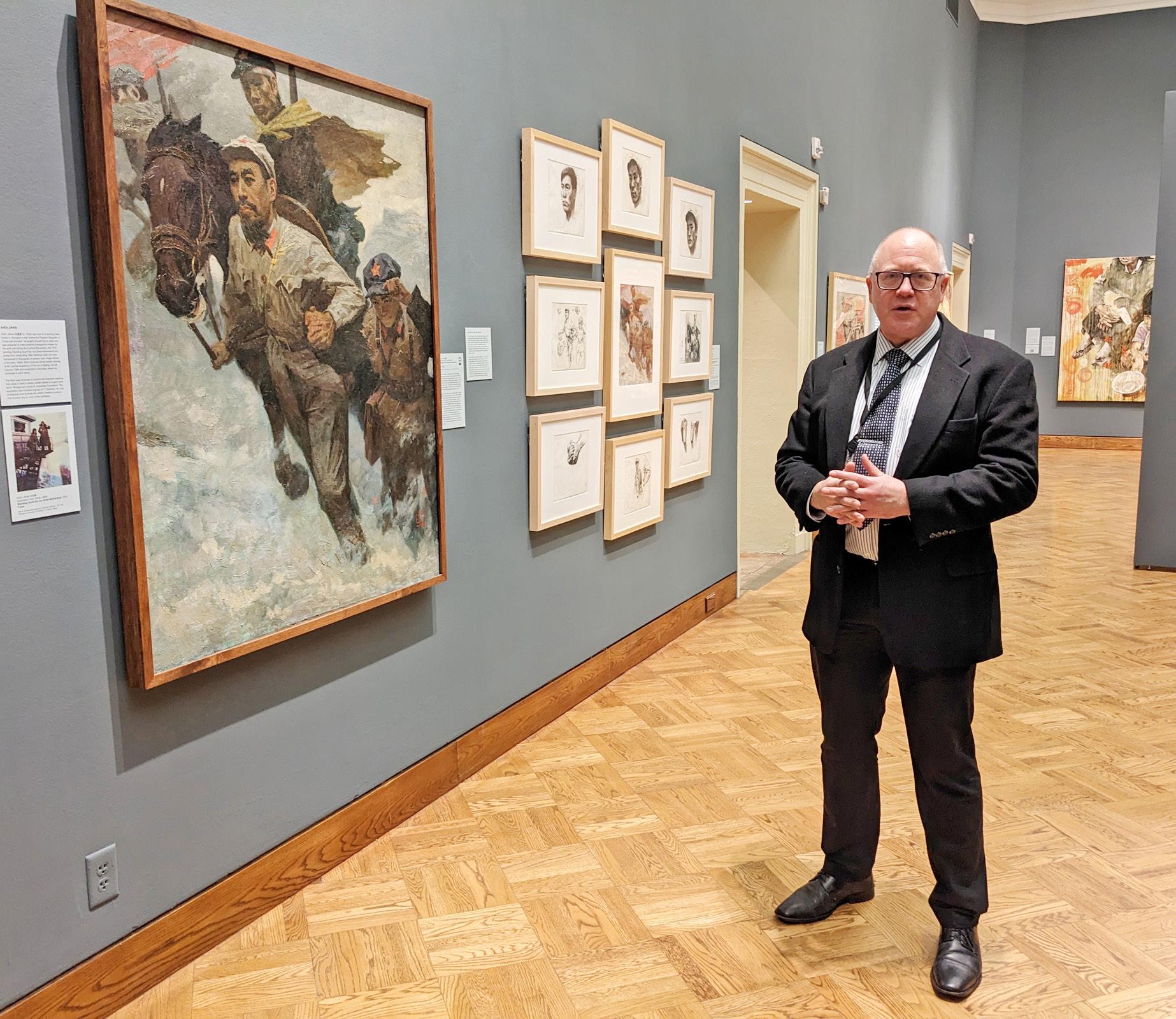
1 minute read
Oberlin exhibit explores art evolution through communist era
OBERLIN — The evolution of Chinese art over more than a century of war and cultural upheaval is the subject of a new exhibition at the Allen Memorial Art Museum.
“Riding the Strong Currents” features more than 30 pieces from the Oberlin College museum’s collection, many now on public display for the first time.
Kevin Greenwood, the Joan L. Danforth Curator of Asian Art, said Chinese art from 1900 to today reflects tempestuous times.
Paintings evolved through European and Japanese imperialism, devastation caused by the fighting between communist and nationalist forces and then cultural and economic revolutions.
“So I wanted to show how painters in China have in a sense expressed all those changes, all those turbulent times, all those ins and outs of history,” he said last week.
From the beginning of the 20th century to the 1960s, painting was an elite art form purchased by the educated and wealthy, Greenwood said. While some Chinese artists adhered to traditionalist landscapes others experimented with new styles from around the globe. born in Beijing in 1920. He jour neyed to France to practice aspects of Western style, and eventually became a French citizen. difference between those two eras and those two styles,” Greenwood said, showing works in the AMAM’s Stern Gallery. had shifted to depict soldiers, work ers and farmers — socialist “super heroes” working for the communist revolution. Greenwood said the style
Works was inspired by Soviet art and China was viewed “as kind of the younger brother in the communist world order.”
American viewers can have a hard time looking at the era’s paintings, he said — they are blatant propaganda designed to stir patriotic emotions. Several such pieces are by Shen Jiawe, including a 1977 work titled “Climbing Over the Great Snow Mountain.” It romanticizes Zhou En- person in history, people have a much traveling to France as a young man, Liu established the first Western-style art academy in Shanghai, and was one of the first to use nude models, which was controversial in China at the time, Greenwood said. Liu’s works seem like they could have originated anytime over the course of 300 years. But Greenwood said the artist used them to show the nation’s spirit could not be broken.
CENTURY PAGE A2










